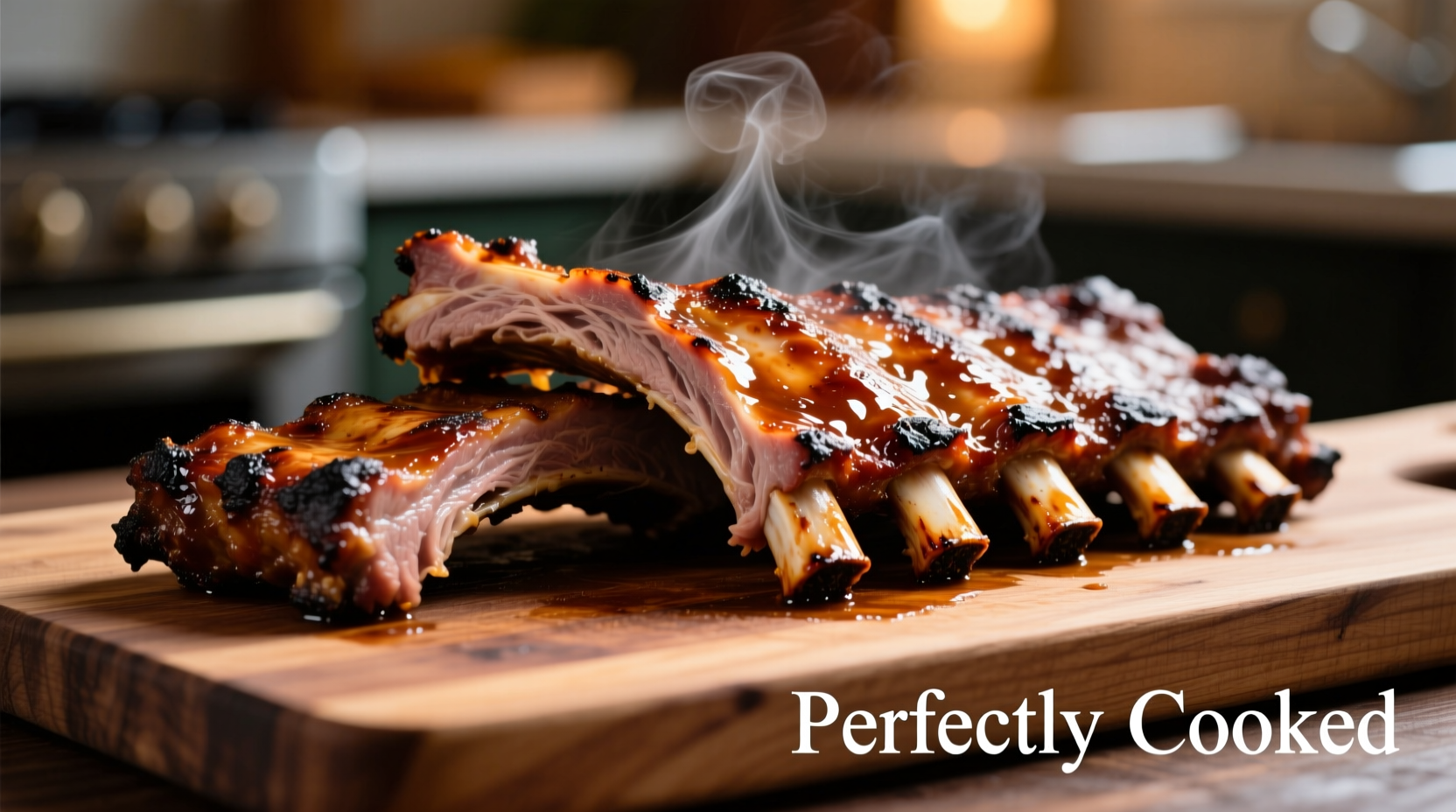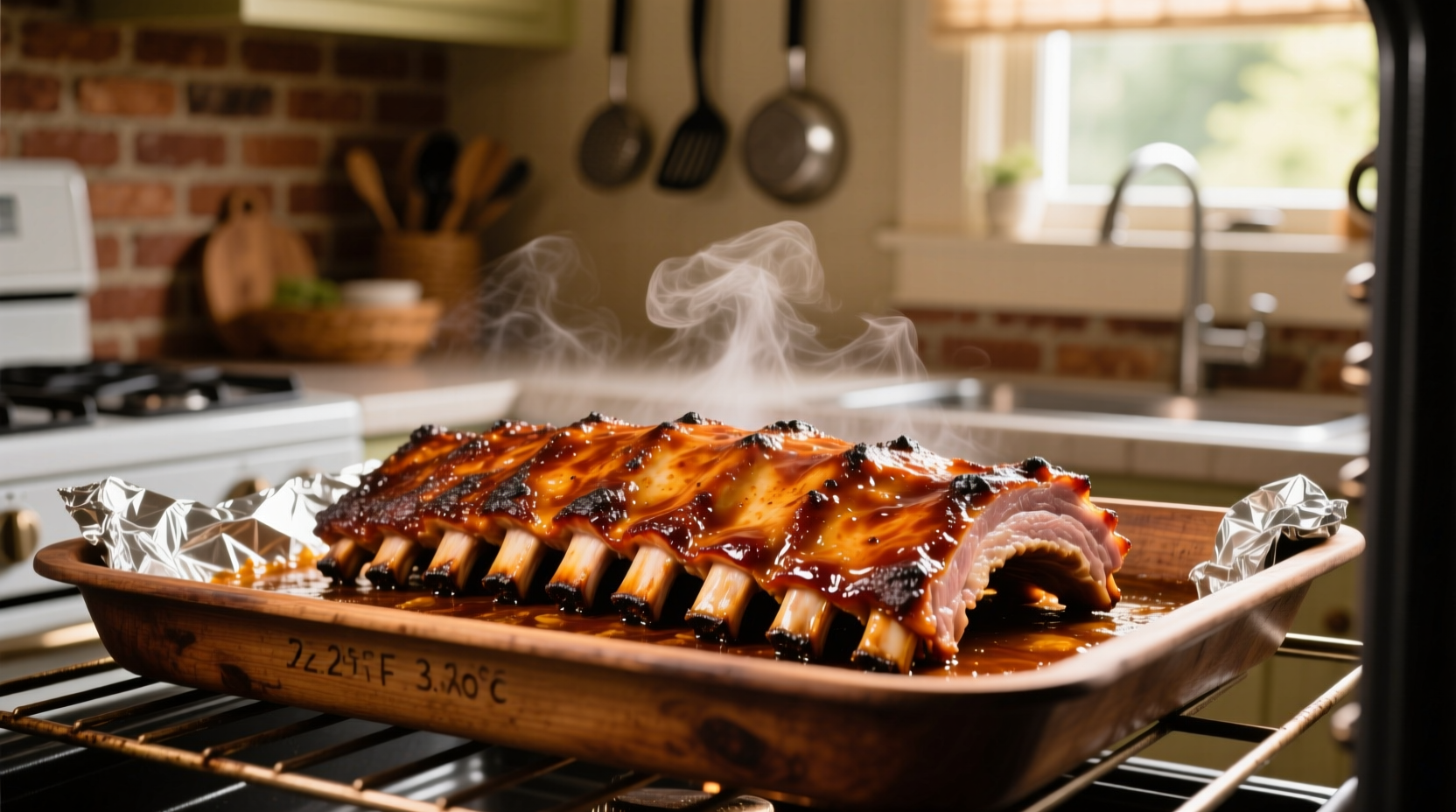Nothing beats perfectly cooked ribs with tender meat that pulls cleanly from the bone. But getting that ideal texture in your oven requires understanding the precise timing and techniques that transform tough cuts into succulent perfection. Whether you're preparing baby backs for a weeknight dinner or spare ribs for a weekend feast, this guide delivers the exact cooking times and pro tips you need for flawless results every time.
Understanding Rib Cooking Fundamentals
Rib cooking isn't just about setting a timer—it's a science of collagen breakdown and moisture retention. The connective tissue in ribs needs sufficient time at proper temperatures to transform into gelatin, creating that signature fall-off-the-bone tenderness. Cooking too fast or at too high a temperature causes the meat to seize up rather than tenderize.
The ideal cooking window balances three critical factors: temperature, time, and rib composition. Lower temperatures require longer cooking but yield more consistent results. Higher temperatures speed up the process but increase the risk of drying out your ribs. Understanding these dynamics helps you adjust cooking times based on your specific situation.
| Rib Type | Temperature Range | Recommended Time | Internal Temp for Doneness |
|---|---|---|---|
| Baby Back Ribs | 275-300°F (135-150°C) | 2.5-3 hours | 190-203°F (88-95°C) |
| Spare Ribs | 250-275°F (120-135°C) | 3-4 hours | 195-205°F (90-96°C) |
| St. Louis Cut | 275°F (135°C) | 3-3.5 hours | 190-200°F (88-93°C) |
This cooking time comparison shows why understanding your specific rib type matters. Baby backs come from the loin area and are leaner, requiring less cooking time. Spare ribs contain more connective tissue and fat, needing additional time to break down properly. The USDA recommends cooking pork to a minimum internal temperature of 145°F (63°C) for safety, but ribs require much higher temperatures to achieve proper tenderness—typically 190°F (88°C) or higher.
Step-by-Step Oven Rib Cooking Process
Follow this professional technique for consistently perfect oven-cooked ribs:
Preparation Phase (15 minutes)
Remove the membrane from the bone side of the ribs using a butter knife to lift the edge, then grip with a paper towel and peel away. This crucial step allows seasoning to penetrate and prevents toughening during cooking. Apply your dry rub generously, covering all surfaces. Let the ribs sit at room temperature for 30-60 minutes before cooking to ensure even heat distribution.
Cooking Phase (2.5-4 hours)
Preheat your oven to 275°F (135°C). Place ribs bone-side down on a wire rack positioned over a baking sheet lined with aluminum foil (for easy cleanup). For extra moisture retention, add 1 cup of apple juice or broth to the bottom of the pan. Cook uncovered for the first 2 hours, then:
- For baby backs: Continue cooking uncovered for 30-60 minutes
- For spare ribs: Wrap tightly in foil with 1/4 cup liquid (apple juice, beer, or broth) and return to oven for 1-2 hours
The foil wrap method (known as the Texas crutch) accelerates tenderization while preventing excessive moisture loss. After wrapping, remove the foil for the final 30 minutes to allow the exterior to firm up before serving.

Doneness Indicators Beyond Timing
While timing provides a good framework, these visual and tactile indicators confirm perfect doneness:
- The bend test: Using tongs, lift the rack from one end. Properly cooked ribs will bend significantly, and cracks will form in the surface bark
- Meat retraction: The meat should have pulled back from the bones by about 1/2 inch
- Internal temperature: Use an instant-read thermometer to verify 195-205°F (90-96°C) in the thickest part
- Fork test: A fork should slide between bones with little resistance
Timing alone can be misleading due to oven temperature variations. Home ovens often fluctuate by 25-50°F (14-28°C), significantly impacting cooking times. Always verify doneness using multiple indicators rather than relying solely on the clock.
Troubleshooting Common Rib Problems
Ribs too tough? They likely need more time. Return to oven and check every 20 minutes. The collagen needs sufficient time to break down completely.
Dry or stringy ribs? This usually indicates overcooking or insufficient moisture. For future attempts, wrap earlier in the cooking process or add more liquid to the pan. Try lowering your oven temperature by 25°F (14°C) and extending cooking time.
Uneven cooking? Rotate the pan halfway through cooking. Position ribs so thicker sections face toward the back of the oven where heat typically concentrates.
Context-Specific Adjustments
Your ideal cooking time depends on several contextual factors:
- Oven type: Convection ovens cook 25% faster—reduce temperature by 25°F (14°C) or shorten cooking time
- Rack position: Middle rack provides most even heat distribution
- Pan material: Dark metal pans absorb more heat than shiny aluminum, potentially reducing cooking time
- Starting temperature: Ribs straight from the refrigerator need 20-30 minutes longer than room-temperature ribs
For time-pressed cooks, the high-heat method (350°F/175°C for 1.5-2 hours) works in a pinch but requires careful monitoring to prevent drying. This approach suits thinner baby back ribs better than meatier spare ribs.
Final Touches for Perfect Ribs
Apply barbecue sauce during the last 15-30 minutes of cooking to prevent burning. For caramelized perfection, finish under the broiler for 2-3 minutes, watching carefully to avoid charring. Let ribs rest for 10-15 minutes before slicing—this allows juices to redistribute throughout the meat.
Mastering oven-cooked ribs transforms an intimidating cut into a reliable weeknight dinner. By understanding the relationship between time, temperature, and rib composition, you'll consistently achieve restaurant-quality results without firing up your grill. Remember that patience pays off—those extra 30 minutes in the oven often make the difference between good ribs and extraordinary ribs.











 浙公网安备
33010002000092号
浙公网安备
33010002000092号 浙B2-20120091-4
浙B2-20120091-4